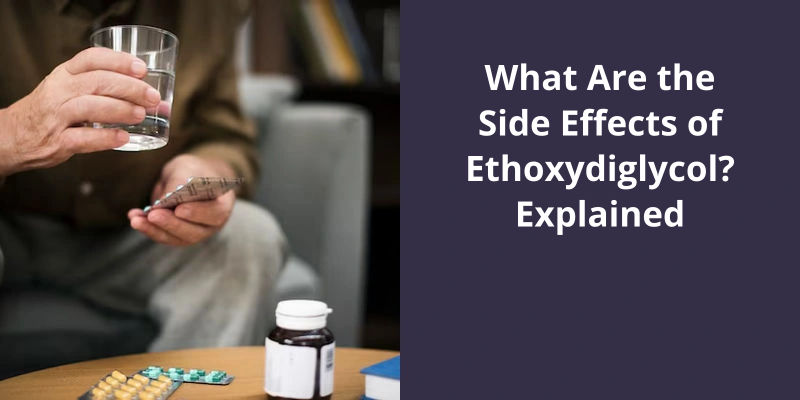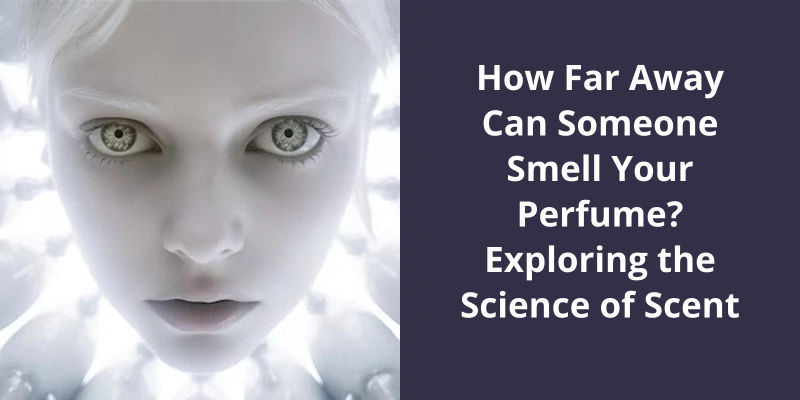Ethoxydiglycol, an ingredient often used in cosmetics and skincare products, is generally recognized as safe; however, it may still cause some side effects. While it helps other ingredients to penetrate the skin better, this could also cause your skin to absorb harmful substances along with the beneficial ones. Some people may experience skin irritation such as redness, itching, and burning, especially if they have sensitive skin. In respect to indirect health impact, ethoxydiglycol is made from ethylene oxide, which is a carcinogen, and even though it goes through a purification process, traces may remain in the final product. Therefore, some people prefer to avoid it in their skincare routine.

Is Ethoxydiglycol Comedogenic?
Ethoxydiglycol is a clear and colorless liquid that’s used in a variety of skin care and cosmetic products as a solvent, humectant and viscosity controlling agent. It’s also referred to as diethylene glycol monoethyl ether, and it’s chemical formula is C6H14O3.
One of the concerns that many people have when it comes to using skin care products is the risk of them clogging pores and causing breakouts. This is a common problem with many ingredients that are used in skin care, as some substances are known to have high comedogenicity or pore-clogging potential.
Thankfully, Ethoxydiglycol isn’t one of those ingredients. When applied to the skin, it’s non-comedogenic, which means that it doesn’t cause or contribute to the formation of acne lesions, blackheads, whiteheads, or other types of blemishes.
In fact, Ethoxydiglycol has been shown to be highly safe and well-tolerated by human skin, with almost no reported incidences of irritation, allergic reactions, or other adverse effects.
This makes it an ideal ingredient to include in a wide range of skin care products, from moisturizers and toners to serums and spot treatments. It helps to hydrate and plump up the skin, while also improving it’s texture, tone, and overall appearance.
Now that we’ve a brief understanding of what Ethoxydiglycol is, let’s take a closer look at it’s role in hair products and why it’s become such a popular ingredient in the industry.
What Is Ethoxydiglycol in Hair Products?
Ethoxydiglycol is a clear, colorless liquid with a slightly sweet odor that’s found in a wide range of hair products including shampoos, conditioners, hair dyes, and styling products. One of the key functions of Ethoxydiglycol is to help increase the solubility of various ingredients in formulas that aren’t water-soluble. This is particularly important for hair products that contain oils and silicones that aren’t easily dispersed in water-based solutions.
Humectants are substances used to increase the moisture content of hair products. Ethoxydiglycol performs this function by attracting moisture molecules from the environment and holding them in the hair product. This helps to keep the hair hydrated and less prone to drying out. It’s also an excellent moisturizing agent because it’s the ability to penetrate the hair shaft to deliver hydration deep into the hair. This makes it ideal for use in hair masks and conditioners.
Source: ETHOXYDIGLYCOL (Solvent): Cosmetic Ingredient INCI
While Ethoxydiglycol has several benefits and applications in skin and hair care products, some may wonder whether it’s a natural ingredient or not. Here, we will explore the sources and properties of Ethoxydiglycol to answer this question.
Is Ethoxydiglycol a Natural Ingredient?
Despite being derived from grain alcohol, Ethoxydiglycol isn’t a natural ingredient. It’s a synthetic compound that’s produced through a chemical reaction between ethylene oxide and ethanol. Ethylene oxide is a highly toxic gas that’s used in the production of many other synthetic compounds, including antifreeze and plastic.
Ethoxydiglycol is often used in cosmetics and personal care products because of it’s excellent solvent properties. It’s able to dissolve a wide range of other ingredients and can help ensure that products stay well-mixed and consistent. Additionally, it’s relatively inexpensive compared to other solvents, which makes it an attractive option for manufacturers.
However, some people may be concerned about the safety of using Ethoxydiglycol in their personal care products. While the compound itself is generally considered safe and non-toxic, there’s some evidence to suggest that it could be harmful if it’s absorbed into the body over a long period of time. This is particularly concerning when it comes to products that are applied to the skin, as they can be absorbed directly into the bloodstream.
It’s a versatile and effective ingredient that’s well-suited to a wide range of applications, and it remains a popular choice for many manufacturers.
Consumers should be aware of potential risks associated with prolonged exposure to the compound, but for most people, it’s unlikely to cause any serious health problems.
What Other Products Commonly Contain Ethoxydiglycol Besides Cosmetics and Personal Care Products?
- Cleaners and detergents
- Paints and coatings
- Inks and printing products
- Adhesives and sealants
- Automotive products
- Industrial and institutional products
Ethoxydiglycol is a versatile chemical compound that’s gained wide acceptance in the pharmaceutical and cosmetic industries for it’s solubilizing properties. It’s usefulness in topical preparations has made it a popular ingredient in various formulations. It’s medical use has been linked to it’s ability to enhance the bioavailability of active pharmaceutical ingredients (APIs) and improve the efficacy of the final product. In this article, we explore the medical uses of Ethoxydiglycol and it’s benefits in topical preparations.
What Is the Medical Use of Ethoxydiglycol?
It can be found in a variety of skincare and personal care products, such as moisturizers, sunscreens, and body washes. Ethoxy diglycol can also be found in hair products, such as shampoos and conditioners, as it helps to improve the spread ability and absorption of these products into the scalp and hair.
Additionally, ethoxy diglycol has been used in the pharmaceutical industry to improve the solubility of certain drugs. It’s been shown to enhance drug delivery and absorption when used in conjunction with other solvents and carriers.
It’s also been found to have emulsifying properties, making it useful in formulations that require the blending of oil and water-based ingredients.
It’s safe use in topical applications has been well established, further highlighting it’s usefulness as a key ingredient in many skincare and personal care products.
The Potential Side Effects or Risks of Using Products Containing Ethoxydiglycol
- Skin irritation, rash, or redness
- Allergic reactions, including swelling, itching, and difficulty breathing
- Eye irritation or redness
- Increased skin sensitivity to sunlight
- Prolonged use may lead to liver or kidney damage
- Inhalation of the product may cause respiratory irritation or damage
- Ingestion of the product may cause nausea, vomiting, and diarrhea
Ethoxydiglycol is a common ingredient found in personal care and cosmetic products. While it’s been deemed safe by regulatory agencies, there are concerns regarding it’s potential health effects. These concerns range from allergies and immunotoxicity to developmental and reproductive toxicity, with use restrictions placed on the chemical due to it’s high risk for cancer. In this article, we’ll delve deeper into the concerns surrounding ethoxydiglycol and what you need to know before using products containing this ingredient.
What Are the Concerns With Ethoxydiglycol?
Ethoxydiglycol is a chemical commonly used in cosmetics and personal care products as a solvent and skin-conditioning agent. Despite being a prevalent ingredient in many products, it’s also raised concerns surrounding it’s safety for human health and the environment. One of the most common concerns with Ethoxydiglycol is related to it’s potential link to cancer. Research suggests that prolonged exposure to high concentrations of Ethoxydiglycol may increase the risk of tumor growth in the liver and kidneys. However, further studies are required to confirm these claims.
Another major concern with Ethoxydiglycol is related to it’s possible allergies and immunotoxicity. This chemical is known to cause skin irritation, redness, and itching, particularly in those with sensitive skin.
Ethoxydiglycol has also been linked to developmental and reproductive toxicity concerns. Similarly, male rats exposed to Ethoxydiglycol showed a reduced ability to produce sperm, suggesting a potential link to reproductive toxicity.
Due to these concerns, regulatory authorities have imposed restrictions on the use of Ethoxydiglycol.
The Prevalence of Ethoxydiglycol in Different Types of Cosmetics and Personal Care Products.
- Facial cleansers
- Body washes
- Shampoos
- Hair conditioners
- Sunscreen lotions
- Moisturizing lotions
- Eye creams
- Lip balms
Conclusion
It’s important for consumers to be aware of the ingredients in the products they use and to research potential risks before purchasing them. Furthermore, companies should prioritize the safety of their products and stay up-to-date on the latest research to ensure they aren’t causing harm to their customers. Overall, avoiding harmful chemicals in personal care products is crucial for not only our individual health, but also for the health of our environment and future generations.





